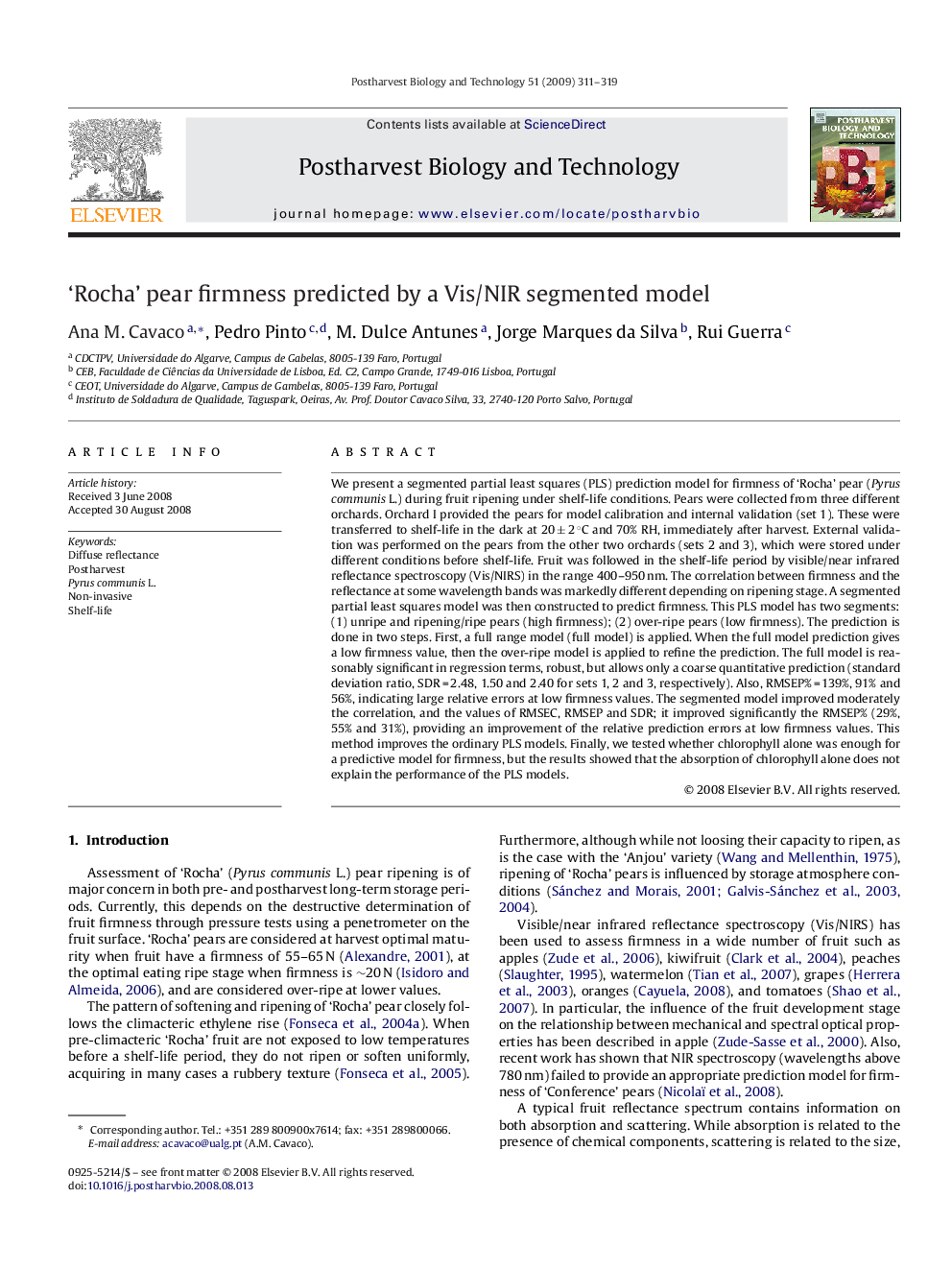| کد مقاله | کد نشریه | سال انتشار | مقاله انگلیسی | نسخه تمام متن |
|---|---|---|---|---|
| 4519219 | 1322824 | 2009 | 9 صفحه PDF | دانلود رایگان |

We present a segmented partial least squares (PLS) prediction model for firmness of ‘Rocha’ pear (Pyrus communis L.) during fruit ripening under shelf-life conditions. Pears were collected from three different orchards. Orchard I provided the pears for model calibration and internal validation (set 1). These were transferred to shelf-life in the dark at 20 ± 2 °C and 70% RH, immediately after harvest. External validation was performed on the pears from the other two orchards (sets 2 and 3), which were stored under different conditions before shelf-life. Fruit was followed in the shelf-life period by visible/near infrared reflectance spectroscopy (Vis/NIRS) in the range 400–950 nm. The correlation between firmness and the reflectance at some wavelength bands was markedly different depending on ripening stage. A segmented partial least squares model was then constructed to predict firmness. This PLS model has two segments: (1) unripe and ripening/ripe pears (high firmness); (2) over-ripe pears (low firmness). The prediction is done in two steps. First, a full range model (full model) is applied. When the full model prediction gives a low firmness value, then the over-ripe model is applied to refine the prediction. The full model is reasonably significant in regression terms, robust, but allows only a coarse quantitative prediction (standard deviation ratio, SDR = 2.48, 1.50 and 2.40 for sets 1, 2 and 3, respectively). Also, RMSEP% = 139%, 91% and 56%, indicating large relative errors at low firmness values. The segmented model improved moderately the correlation, and the values of RMSEC, RMSEP and SDR; it improved significantly the RMSEP% (29%, 55% and 31%), providing an improvement of the relative prediction errors at low firmness values. This method improves the ordinary PLS models. Finally, we tested whether chlorophyll alone was enough for a predictive model for firmness, but the results showed that the absorption of chlorophyll alone does not explain the performance of the PLS models.
Journal: Postharvest Biology and Technology - Volume 51, Issue 3, March 2009, Pages 311–319